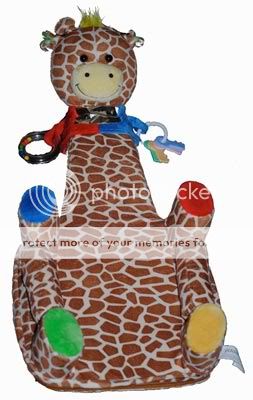
So we all have heard, "back to sleep, tummy to play," but is that really happening? We know that sleeping on the back is the best position for babies to reduce the risk of SIDS, however, babies tend to not get enough playtime on their bellies. This supervised playtime also known as 'tummy time' is very important for gross motor and cognitive development. Yet, most families tend to shy away from 'tummy time' because their babies get frustrated in this position quite quickly.
Babies spend a large chunk of their day on their backs whether it be sleeping, car seats, bouncy seats, swings, etc.. All of these apparatuses place the baby in the same position, or as we PTs call it, the supine position. This position places stress/pressure on the back of the babies head and can lead to flat spots or plagiocephaly. Recent estimates state that more than 1/2 the babies under 1 year of age will show some type of plagiocephaly or flat spots. In addition, increased time in the supine position can potentially delay gross motor skills such as rolling, crawling, walking, etc. In order for a baby to master rolling from their belly to back, they first need to learn to push up while on their stomach. Once this skill is mastered, they can move to rolling, then sitting, crawling, etc. If one of the early gross motor skills is delayed, it can delay others down the road.

Another important aspect of 'tummy time' for babies is that it helps them develop cognitive skills otherwise known as thinking and reasoning skills. When the baby plays on their stomach, they are able to manipulate toys and play in their environment differently than they can lying on their back. It gives them a different view or perspective of the world.
Parents often wonder how old their baby should be when doing 'tummy time.' Babies can start tummy time at day one. There are many different ways to do tummy time depending on the babies age and temperament. Here are just some ideas of the varying ways tummy time can be performed:
- Place Baby on their Belly on Parent's Chest
- Place Baby on their Belly Across Parent's Legs
- Place Baby Flat on their Belly on Mat, Blanket, Etc.

In this position, place person or objects in direct field of vision of baby.
- If it is a person, have the person lie down on their belly in front of the baby so the baby can see them. Their field of vision is not far and they may have difficulty lifting their head up to see your face if you are sitting up.
- place toys in front of them that are stimulating or have a noise or music component to hold their interest.
- Prop baby up:
- Fold up a small towel or receiving blanket and place under the baby's chest to raise them up a bit. This may help them lift up.
- use a specifically designed 'tummy time' playmat (I am partial to the Biddy Belly). These mats help raise the baby up so they can see and interact more.
Whichever way you decide to do tummy time, it is unique to each family. What works for one baby may not work for another. Don't give up if your baby gets frustrated (most do); try again and/or try a different technique and they just might surprise you.
*Also see Biddy Belly product review as featured on JustMommies' blog.
About the Author:
 Robin Tacchetti is a mom of three and a physical therapist in Maryland. She has worked in various clinics, taught in Physical Therapy programs, and published several articles on catastophic injuries in various sports. She is also the creator and owner of the Biddy Belly, the new and unique tummy time playmat for babies.
Robin Tacchetti is a mom of three and a physical therapist in Maryland. She has worked in various clinics, taught in Physical Therapy programs, and published several articles on catastophic injuries in various sports. She is also the creator and owner of the Biddy Belly, the new and unique tummy time playmat for babies.
